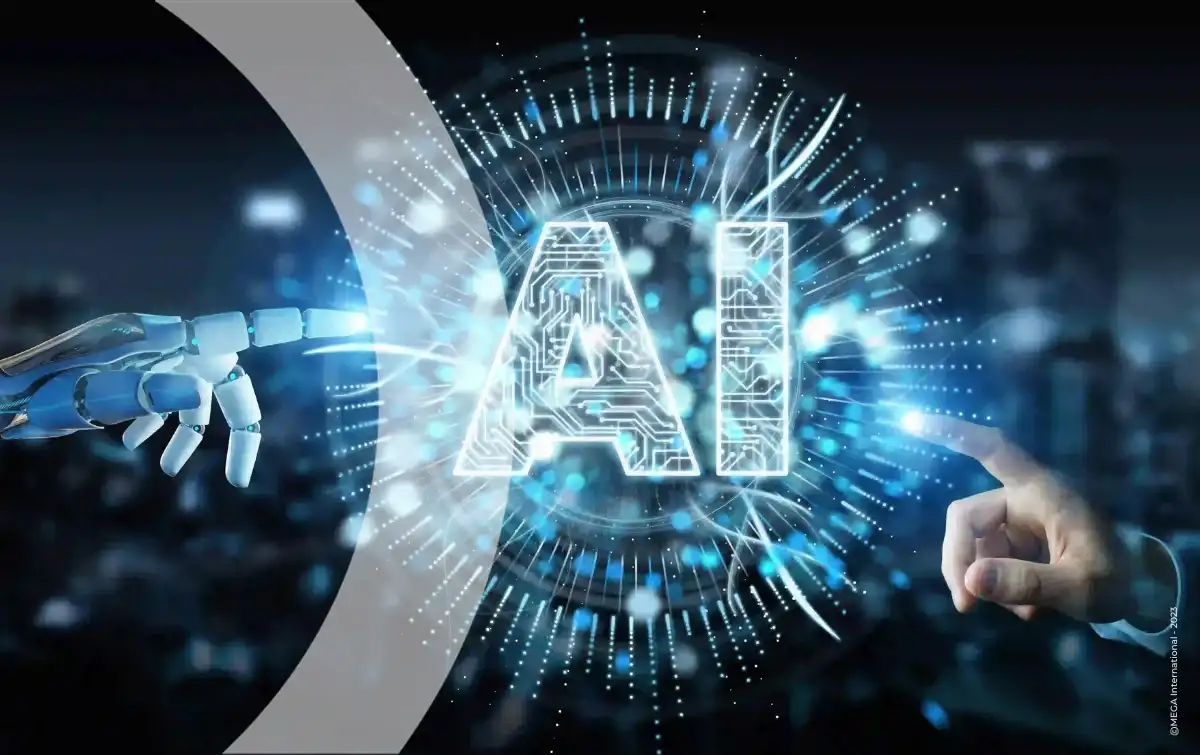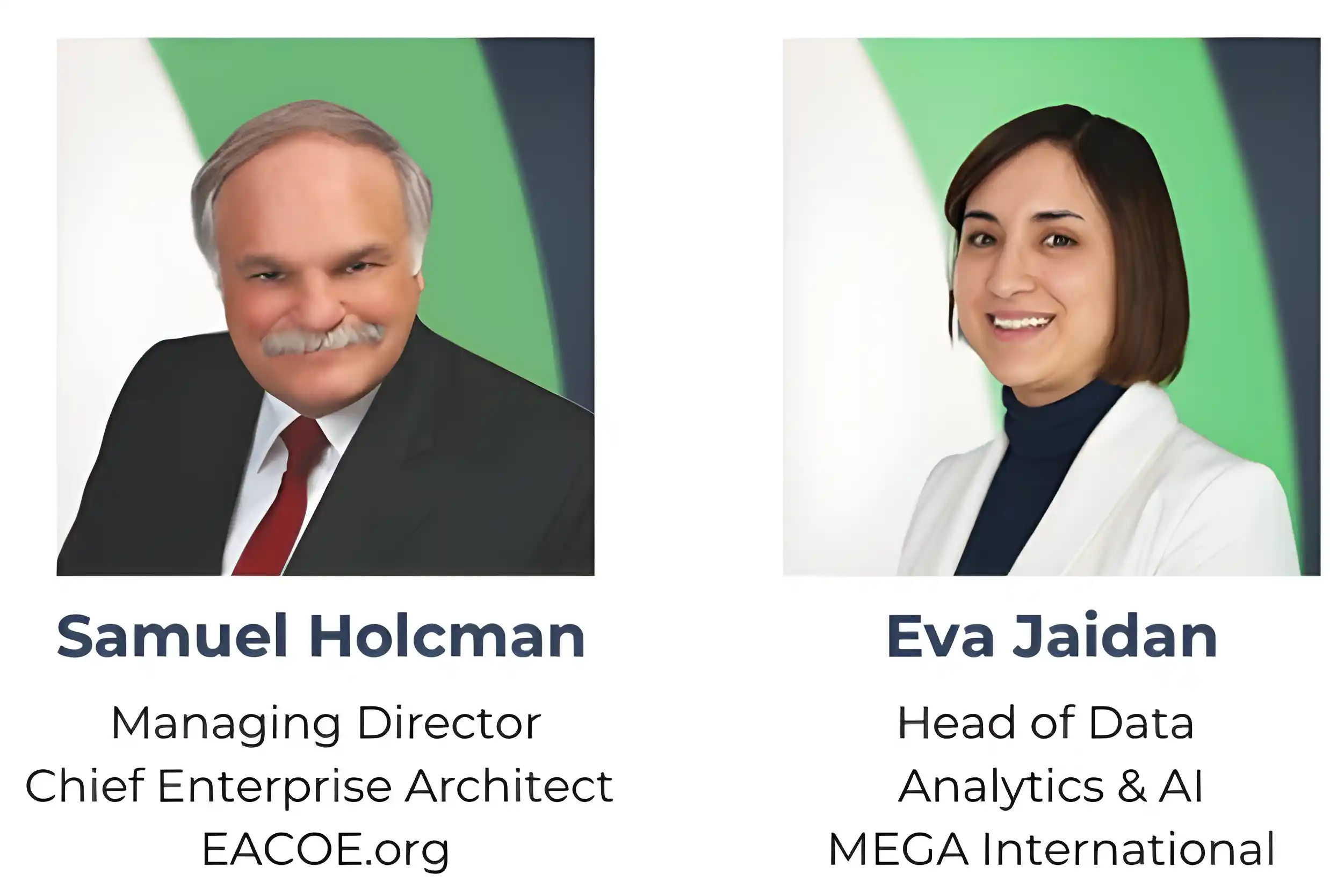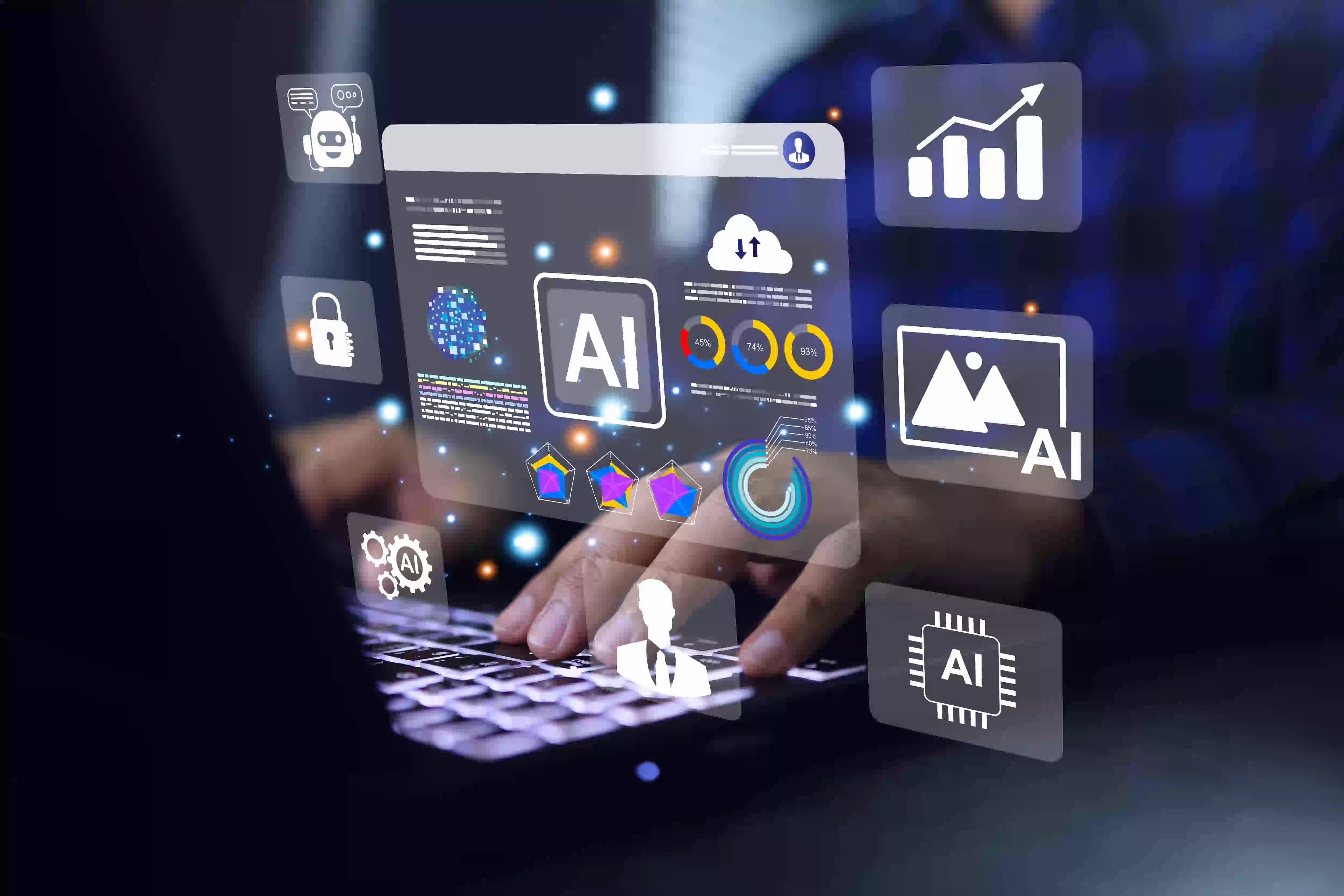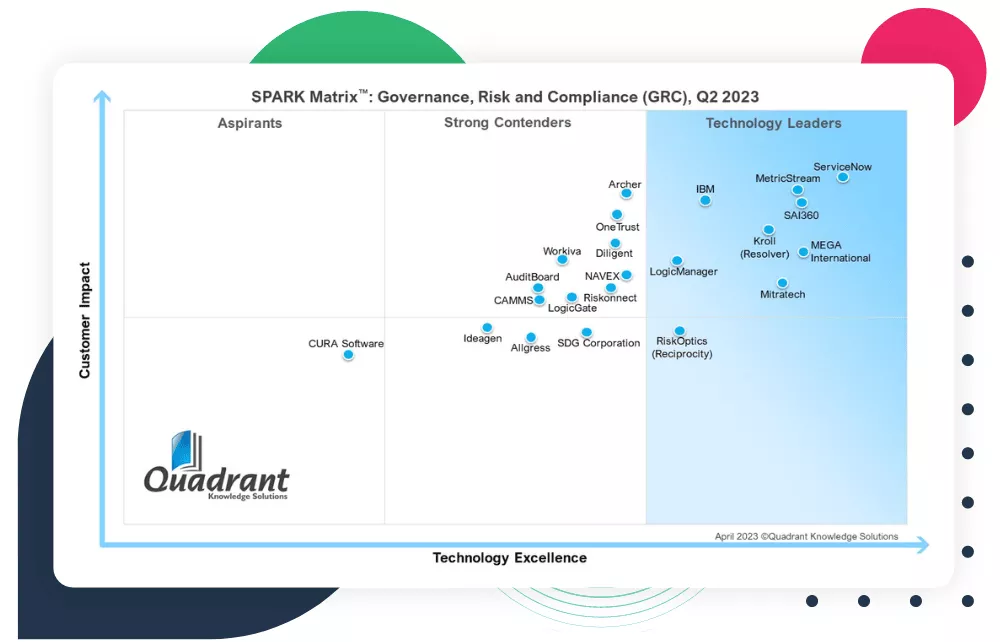
Revolutionizing the Business with Enterprise Augmented Intelligence
The landscape of enterprise architecture (EA) is being drastically reshaped by the emergence of sophisticated artificial intelligence (AI) large language models (LLM).
During the MEGA EA Exchange digital conference, Eva Jaidan, the Head of Data Analytics and AI at MEGA International, interviewed Samuel Holcman, the Managing Director of the Enterprise Architecture Center Of Excellence (EACOE).
The discussion between these two experts focused on how AI is revolutionizing the way enterprise architects make critical decisions. It was an opportunity to dive deep into issues such as secure AI integration, the importance of human-in-loop considerations in, as Samuel Holcman has named “AI”, “Augmented Intelligence”, and the significance of awareness in navigating today’s rapidly evolving business environment.
Boosting Traditional EA with AI Advancements
EA is about understanding what is required to enable a business to develop an effective enterprise strategy. Within this area, there are many different options organizations can have. The question is, how do you analyze those areas as quickly as possible?
With the proper EA and artificial intelligence tools, we can simulate various options and look at different processes, data sources, and strategies. Technologies like artificial intelligence allow EA professionals to evaluate these factors faster than we ever could before.
Fundamentally, as Sam has pointed out, technology has always been about processing data. With an EA-driven approach, an AI-powered machine learning tool can quickly provide companies with road maps. Advanced AI analytics, automation, and recommendation systems are allowing better and faster decision-making in the EA framework.

In terms of business performance, the critical issue is data reliability. Companies must focus on leveraging EA to drive the efficient usage of artificial intelligence.
Decoding EA: The Four Types of LLM Data
Sam Holcman analyzed the data that LLM engines are trained on and has identified four different types of data.
- The most common data is general Internet data, which can be questionable. Because they train themselves, AI algorithms can multiply insufficient, unreliable data.
- The second class of information is the use of data copyrighted by an organization without permission. The use of copyrighted and trademark data by AI has already resulted in several lawsuits being filed. Mr. Holcman emphasizes the need for caution: “It's important to recognize that if someone robs a bank and you are the one driving the getaway car, you're going to jail too. We need to be a little cautious about using that data,” Mr. Holcman emphasizes.
- The third type of data is what is known as a mutual exchange of information. For example, a customer provides their e-mail address, and a company provides them with an article they can use. This is an equal exchange of information.
- The fourth type of data is best practices. Best practices cost money and are not stored on the Internet. Therefore, many LLMs are trained on not more than just one or two categories of the possible data sources that exist.
Organizations need to recognize that LLMs are very powerful and are revolutionizing business operations. Companies must be cautious about what data is used and how it is being used.
“There is no verifiable research that we found that shows that large amounts of data are the answer. It's the quality of the data, not the quantity. I want to separate artificial intelligence engines into two component parts: the processing and the data. Let's use the processes on our own data”, continued Sam.
Unmasking the “Shadow AI” Phenomenon
The use of AI LLMs relies on the age-old ‘quality in, quality out’ principle. Unfortunately, the incredible response capabilities of LLMs such as ChatGPT have led to a surge in enthusiasm to share large amounts of data.
This can include confidential or intellectual property or sensitive company information. Sharing data with a system such as ChatGPT that uses open AI can pose various security risks.
The main result is that the AI system then retrains itself from sensitive information without the formal knowledge or approval of the data owners. This is what Sam has named and is known as ‘shadow AI’.

Shadow AI occurs when stakeholders or business personnel don’t go through normal technology channels because of frustration or curiosity. Mr. Holcman suggests that Organizations need to create a ‘sandbox’ area that is separate from the normal channels and not on the same network.
The sandbox provides a space where staff can explore the capabilities of AI in a controlled way that doesn’t pose a security risk.
“Enterprise Augmented Intelligence” – The Future of Business
What organizations require is what Sam has named as “Enterprise Augmented Intelligence”, also known as Enterprise Augmented Information (EAI). EAI is the real power of the new engines and a powerful EA tool if it is using good data. The power comes from an architected environment that drives the implementation of AI.
Companies can leverage augmented intelligence to build resilient internal structures and practices.
“AI is here to augment our intelligence. We must take advantage of it properly with best practices. We are entering a new world of AI. Organizations must integrate AI. If generative AI is securely integrated into businesses, it could offer an alternative to capabilities we have in the public domain and enhance the ability of stakeholders.”
AI Revolution: Unlocking Human Potential and Integration
Many people are concerned that the rise of AI will result in widespread job losses. However, the role of AI can be seen as enhancing human capabilities.
Advances in technology that change how we work are nothing new. Throughout history, there has been skilled displacement. Mr. Holcman relates a story where, in the 1980s, business leaders in the Detroit automobile industry envisioned a ‘lights-out factory’ where robotics controlled the entire production process.
Recently, the Tesla Corporation attempted to make this vision a reality. Ultimately, the lights-out factory model has proven to be unworkable. Regardless of advances in robotics or software, skilled workers are always required.
Another example of the limitations of technology can be found in the development of autonomous vehicles.
Mr. Holcman refers to his history of more than 40 years in the industry. He gives the example of automotive companies’ continuous efforts to manufacture self-driving cars. Despite the advances in AI, we are still a long way from having autonomous vehicles on the roads.
The relationship between AI and business is still in its early stages. Rather than halting progress, we should focus on training and education.
Since AI is now a part of our world, we need to harness its potential rather than try to put the AI genie back in the bottle. A point to emphasize is the significance of people's skills in the equation.
The use of AI must be aligned with the overall strategy of an organization to ensure that the various applications of AI integrate well with data, corporate processes, and, most importantly, how it's used by different stakeholders.
Unlocking AI Success: Enterprise Architecture and Training Essentials
Achieving successful and sustained AI integration requires organizations to maintain a focus on awareness and training. By helping people acquire the necessary skills, a company can harness the full potential of generative AI tools. This process starts with EA.
Every business is a unique entity with its own internal structures. Sam is fond of analogies, and an analogy can be made with DNA. Just like a human being has their own unique DNA sequence, every organization also has its own unique DNA sequence.
EA is what provides us with an understanding of this DNA. Once we understand the DNA of an organization, then we can harness this knowledge with AI. This is where the real power of AI tools lies in the EA landscape.
R.E.A.L. (Realistic, Enabling, Actionable, Logical) EA, as Sam describes the EACOE Enterprise Architecture Methodology, provides descriptive representations of the difference between one organization and another. Professionals can then apply an AI engine to these representations.
What organizations need to do is train more people in EA and then have those people analyze how AI tools can be applied to optimize business practices. This is where awareness, training, and education become critical.
“Most organizations are still in the mode of what we call handcrafting when it comes to writing programs. To move forward, companies must use EA-driven AI tools. We are now in the Internet age ", states Sam .
The Internet facilitates transactions. Softwares provide us with tools. AI is going to use data to drive decisions. It will accomplish this by building models that map the relationships between all the data that's out there to make patterns to make predictions to drive decisions.”
Summary
AI is drastically changing the business world and the role of EA professionals. Instead of fighting the rise in technologies like artificial intelligence, enterprise architects should embrace the possibilities that it can create. Augmented reality and augmented analytics can be harnessed using Sam’s Enterprise Augmented Intelligence concept.
AI algorithms are revolutionizing business operations. EA professionals need to recognize and understand that developments in AI are set to facilitate their roles and enhance their capabilities. While experts should be encouraged to explore and experiment with this new technology, there must be an understanding of where we are in relation to the maturity of AI. Recognizing this aspect will allow us to properly and securely integrate AI into our journey.
MEGA Leadership Related Content
See the Bigger Picture and Accelerate Business Value
Discover how organizations rely on us to transform their IT
Hear More From Companies Like Yours






